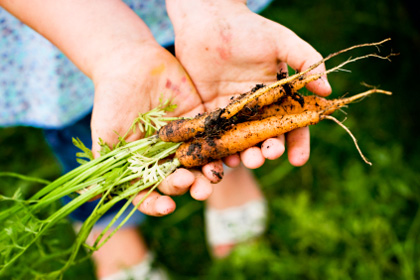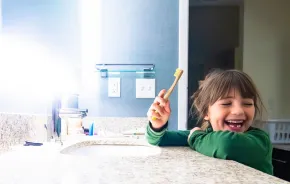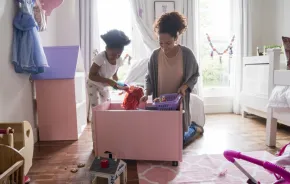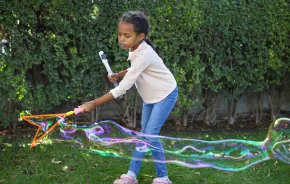 So, you're committed to finally starting that vegetable garden, hey? Good for you! You'll soon discover there are few activities as relaxing and rewarding as gardening. If you're an urban farming freshman starting off at square one, you may feel a bit overwhelmed; and a trip to your local garden or hardware store can really boost your anxiety, as you take in a daunting array of well marketed gardening tools, all of which seem crucial to your success as a neophyte gardener. Well, never fear, young Grasshopper! We've got you covered with a list of tools, tips, and resources that are essential to getting started.
So, you're committed to finally starting that vegetable garden, hey? Good for you! You'll soon discover there are few activities as relaxing and rewarding as gardening. If you're an urban farming freshman starting off at square one, you may feel a bit overwhelmed; and a trip to your local garden or hardware store can really boost your anxiety, as you take in a daunting array of well marketed gardening tools, all of which seem crucial to your success as a neophyte gardener. Well, never fear, young Grasshopper! We've got you covered with a list of tools, tips, and resources that are essential to getting started.
What to keep in mind while getting started
It can be extremely enjoyable to shop for garden tools and supplies, and you can easily get carried away. Here are 13 things that you'll really need (note: the Garden Weasel is not on this list.)
1. Notebook to plan out and record your adventure
2. Shovel for turning over the soil
3. Garden trowel for shallow digging
4. Cultivator for shallow raking and pulling up weeds
5. Garden rake or hoe to level planting areas
6. Measuring cup and plastic bowl for mixing fertilizer (castoff kitchen measuring cups work great!)
7. Measuring stick for spacing out and marking your planting rows and seeds
8. Garden scissors or a small sharp knife for cutting vegetables
9. Cotton string for tying up tomatoes or building a trellis for peas or pole beans
10. Wood sticks or wire cages for supporting tomatoes
11. Gardening gloves
12. Watering can
13. Thermometer for taking soil temperature
Top tips before you dig in
Ideally you will have a water source close to the garden. Add a hose with an adjustable nozzle to your shopping list above if needed. Just make sure you adjust the water spray and strength so the plants aren’t overpowered — emerging lettuce plants are especially vulnerable. Watering cans work perfectly for when you just want to water the root area or have good control over the amount of water being supplied.
Pest control, or understanding it’s not just about us
Learn from my own personal evolution dealing with garden pests over the past 26 years. I long ago stopped sprinkling poisonous white powder over my vegetables to deal with pesky aphids, slugs, and plant disease. I learned that planting in good soil in the right location and practicing faithful crop rotation are essential techniques to promote the growth of healthy plants, and healthy plants are much better suited to fighting off pest infestations.
Planting at the right time, watering correctly, and keeping weeds at bay also help control problems.
Favorite organic pest control tools:
Copper — Slugs and snails will not climb over copper, as it gives them a shock. (Three of my raised beds have flattened copper pipe nailed a couple inches below the rim to keep out the snails.) Copper tape is also available in garden stores and it works well for raised beds prone to snail or slug infestation problems. To get started, fasten the tape around your bed, being sure not to miss a single spot — you may not think snails and slugs are persistent types, but they're certain to find any opening. South-facing beds that get very dry and hot during the summer are typically more slug- and snail-resistant.
Fingers — Fingers are perfect for inspecting and removing unwanted pests or plucking/cleaning diseased leaves to prevent the spread of a disease. Make sure to wash your hands afterwards!
Friendly crawlers — Remember that ladybugs and spiders are good for gardens; do not remove them when they are present. And don’t be afraid to eat washed lettuce or other produce that has a few munches out of it! Consider it payment for a job well done.
Awareness, respect, and the sun
Growing your own food changes your relationship with nature. You become aware of the weather and the sun — and how they change throughout the day and seasons.
Just because you are ready to sow your seeds doesn't mean the weather is. Consider waiting if the spring is too rainy and cold. If you plant seeds too early, they might not sprout and you'll have to replant. If you get lucky with an unseasonably warm spring, be sure to take advantage and plant early!
Growing your own food also deepens respect for farmers and appreciation for the earth’s wonderful gifts. During a good summer, I can grow all of the lettuce and most of the produce we eat — not to mention be in a position to share my prized vegetables with friends and neighbors!
There is always next year ...
Keep a notebook of what you’ve planted, where you planted each vegetable, and when. Jot down when the growth starts pushing through the soil or when you have had to replant. At the end of the growing season (usually early October), note what worked and what didn’t. Start dreaming of what you want to grow again or try next year. What you learned this year will help in the next season. And be sure to keep your unused seed packages in a warm dry place — they’re good for at least another year!
Additional good growing resources:
Growing Vegetables West of the Cascades: The Complete Guide to Organic Gardening, by Steve Solomon. This "bible" of gardening in the Northwest offers best-practices basics, advice for developing raised garden beds, and a “How to Grow It” chapter detailing all kinds of vegetables. This book is a master guide and must-have if you are serious about food gardening.
Seattle Tilth. Seattle's non-profit organic gardening and urban ecology organization has a tremendous website featuring a bumper crop of gardening information and a garden hotline (206-633-0224, Monday through Saturday, 9 a.m.-5 p.m.). Seattle Tilth offers classes and workshops on gardening, composting, raising urban livestock, and conserving natural resources throughout the year, as well as summer camps for kids.
Other gardeners. Seasoned gardeners are always happy to share advice — some things can truly only be passed on through word of mouth!
So get gardening — enjoy being outside and growing something good that will sustain you and your family and friends. Life doesn’t get any better than that!
Check out the rest of our Family Guide to Urban Farming
Did You Know...?
City People's Garden Design & Landscape can install a Children's Garden for you or help you create your dream garden, whatever that may be. From advice to maintenance to complete design and installation, City People's Gardens can make a sun or shade garden, a native or water garden, a formal or country garden, a drought-tolerant or vegetable garden, or a small space container garden. They can also design and install a patio, stone wall, fence, or water feature to complement it! Call (206-324-0737) or email (designandlandscape@citypeoples.com) for a free estimate.









